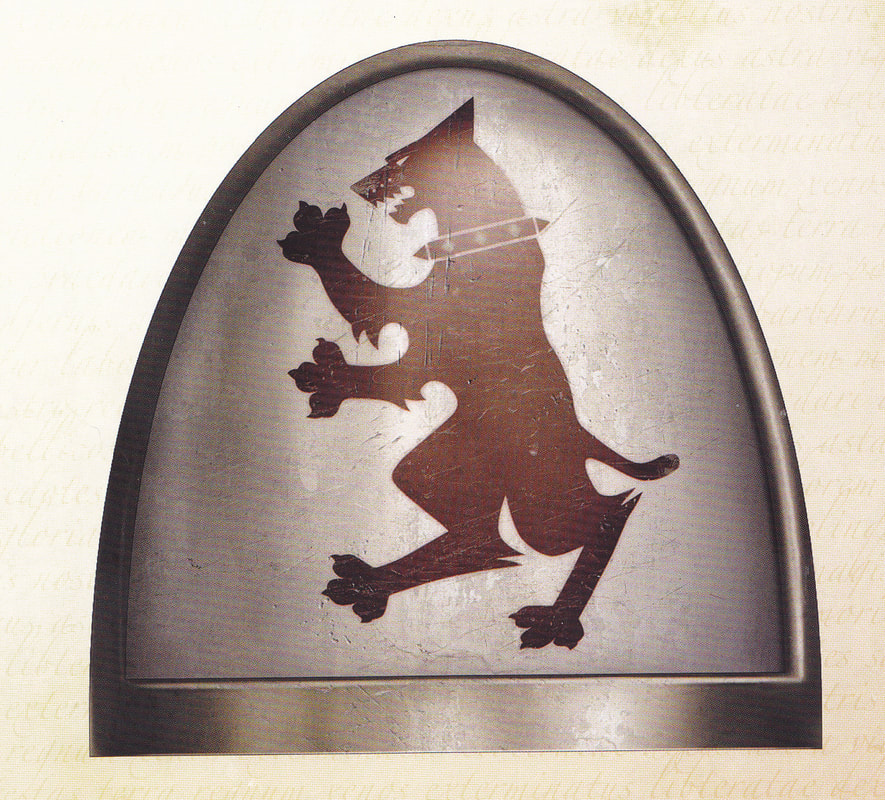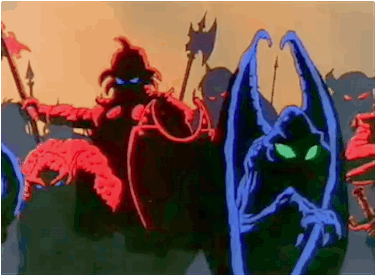| Pictures courtesy of Bell of Lost Souls | It was news out of the blue and brought Beardys hearts to racing point - Games Workshop weren't only releasing Knights like the old Epic Knights - these ones were in WH40k scale! Any real information has been scant, but yesterday Bell of Lost Souls brought a lot of the info together - and today they have some pictures. What's a "Knight" you say? Well think of Space marine Chapters, then take away Marines and give them one-man titans. Those are Knights! For more pics and some back ground... |
They belong to Orders who swear fealty to the Adeptus Mechanicus who operate from their Forgeworld home. The Knightly Orders operate both under instruction from the Imperium and also under instruction from the Adeptus Mechanicus and even independently for the benefit of their own Order.
In battle, the Knights themselves operate in squadrons of generally 3 titans.
I must say - Dreamforge must be PISSED considering how close they are to their Leviathan line!
During the Dark Age of Technology Mankind sent forth many scout and explorer parties to seek out worlds viable for mass production of food for the huge Hive Worlds that the majority of the race inhabited. Such agricultural worlds copied farming techniques learned from Eldar Exodite and Knight Clans already present on some worlds discovered by the humans. The Humans began utilising combat walkers invented by the Eldar and referred to them as "Knights". In a period referred to by the Exodites as The Coming of Men, the xenos and the human colonists clashed in a number of bloody conflicts as the Eldar Knights sought to protect their homes from interlopers.
When these planets were cut off in the Age of Strife, they became Feral Worlds and a warrior aristocracy rose to prominence amongst its human populations, mimicking the lifestyle of the Eldar Clans. On many worlds, the Eldar Knight Clans reconquered the lands they had lost, and settled into a pattern of raiding and battling against the humans, as well as each other. The wealth and power of the human Knight Houses and the Eldar Clans was based on massive herds of Megasaurs -- great beasts created by cloning and genetic engineering by the Eldar prior to the Fall of the Eldar, made to be an efficient source of protein-rich food. These herds diminished over the course of fighting, but as the only readily available food source, they remained vitally important.
While the Eldar shared their duties throughout the clan, the humans enforced a feudal system on their subordinates. A sub-class called the "Drovers" was to look after the herds, as the nobility would not soil their hands with such work. The Drovers used walkers similar to those of their masters, but they were, by law, not armed with any weapons, despite the fact that they faced very serious threats in the form of predators and xenos raids. This forced the Drovers to rely on the Knights for protection, and created a dependency comfortable for the nobles, as it made revolt virtually impossible.
In addition to the Knight war machines, every House had multiple men-at-arms in its employ, resembling somewhat modern Planetary Defence Forces, although possessing a much smaller amount of heavy equipment. The Knights themselves would retire when they reached old age, passing their Battle Armour down to their heir, and in its stead donning the armour of a Warden. They would then take the task of protecting the household and lending its members their advice.
On the majority of these worlds, artificers and technicians became the most important subjects of the warrior nobility. Initially, they only maintained the Knight walkers, but soon learned to speak with one voice, threatening to withdraw their services from any House that would not heed their words. They styled themselves as a priesthood for the half-forgotten mysteries of technology and were called the Sacristans. As their power grew, they arbitrated between the Knight Houses and ensured that the headstrong nobles did not wipe out one another in bitter feuds. The perpetual dangers of their worlds meant that the Humans could ill afford wars of mutual attrition and genocide, and this necessitated the use of chivalric values to settle disputes. Eventually the Sacristans ritualised the values of Duty, Honour and Valour and passed these traditions through generations. With the acceptance of these values, the Knights became known as The Chivalry.
In addition to the threat presented by hostile Houses, The Chivalry had to conduct frequent battles against their worlds' indigenous predators. Hunting these beasts honed their martial skills into a deadly art, preparing them for periods of Warp instability, when the Immaterium spewed forth horrid, mutated beasts to prey upon the material realm. When such a monstrosity was sighted, all of The Chivalry would take on quests to destroy the beast before it could taint the land.
Thousands of standard years after their colonistation, these planets were rediscovered by Rogue Trader Jeffers and brought into the newborn Imperium of Man. When Jeffers described these agricultural worlds he referred to their inhabitants as "Knights," pointing out their many Knightly virtues as he emphasised their planets' worth to the Imperium both as a food source, and as a source of warriors readied for battle from the cradle. The Imperial Administratum agreed with Jeffers' findings and quickly set about rediscovering the rest of these long-lostAgriworlds. Much to their delight, the Imperial officials found that two thirds of the originally settled worlds still possess human populations, with all of their societies working along similar lines. The remaining worlds were either contested between human Knight Houses and Eldar Exodites, or held exclusively by the xenos Knight Clans with strong relations with their alliedCraftworlds, trading raw material for technology.
Most often Knight Worlds became affiliated with a particular Titan Forge World, supplying it with food and raw materials, whilst its Sacristans would fall under the control of the Adeptus Mechanicus. Other Knight Worlds were left with a large degree of autonomy, required only to produce food and obey the call to arms when it was given. The Imperial Cult was introduced in such a way that The Chivalry could be called on by the Imperium to join a "Crusade". Forsaking old rivalries, the Knights would form family units to fight with the Titan Legions or alongside the Imperial Guard. Knights of a given house would be led by a noble holding the rank of a Lord -- or the corresponding title of a Seneschal if he happened to be a Warden. Young Knights sometimes did not possess their own armour, but trained using that of their father. When fighting in a Crusade they were given their own armour, built upon a Mechanicus Forge World. Once they returned home they were allowed to retain the armour and form their own House.







 RSS Feed
RSS Feed